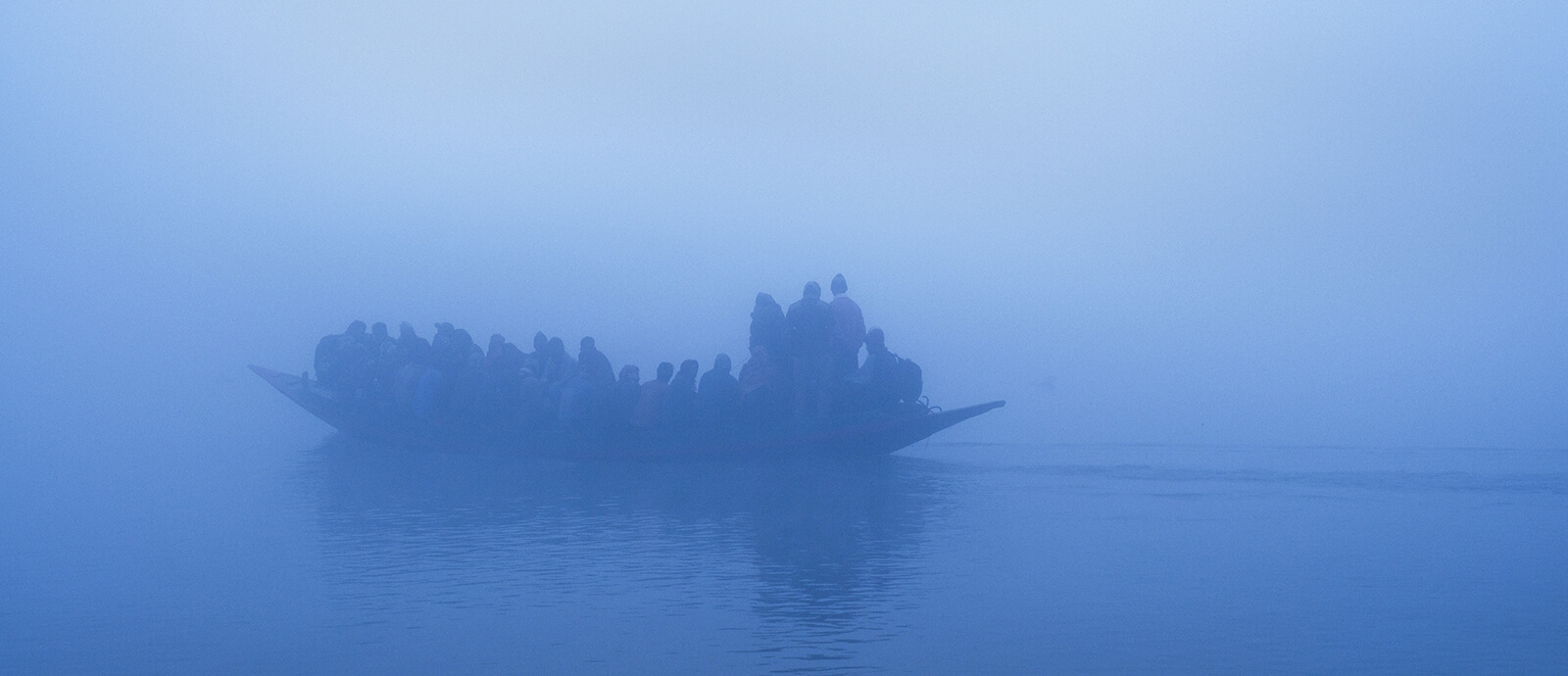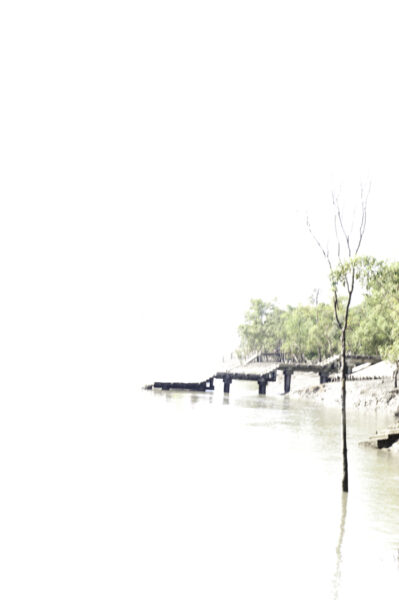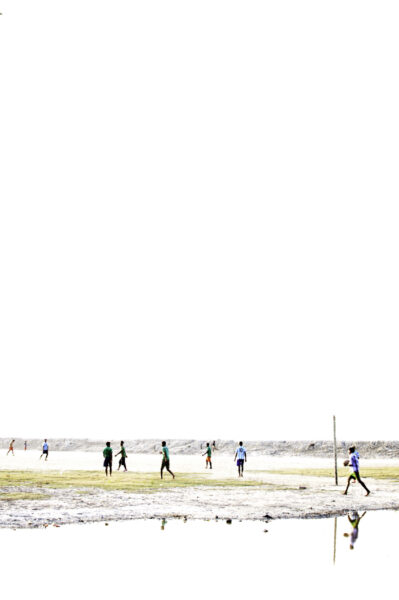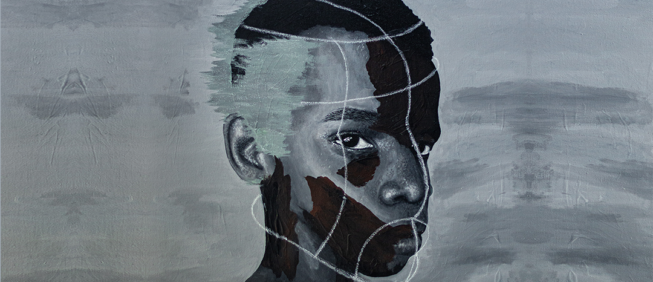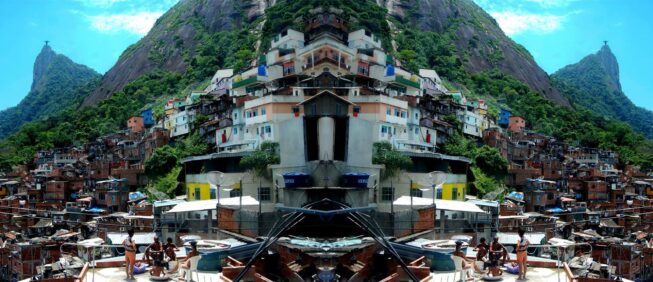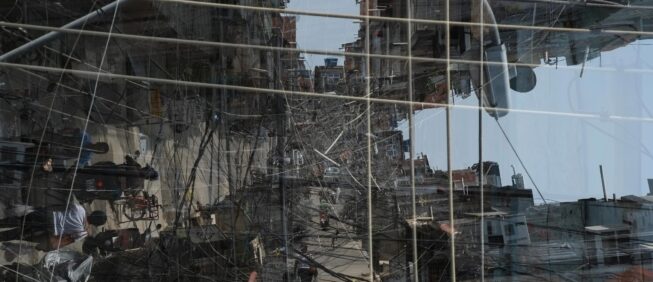Vanishing islands
Stories of Erasure and Resistance
Text by Joyona Medhi | Photography by Abhishek Basu
| India |
Sea levels are on the rise at a rate of 4mm a year. Global climate reports state that we are on course for the second or third warmest year on record, with the global average temperature from January to October about 1.1°C above the pre-industrial-era average. Come to think of it, trends have actually worsened since the Paris climate pact in 2015, under which countries had pledged to curb earth-warming greenhouse gas emissions in order to cap the average temperature rise at 2°C. Going by these terrifying reminders everywhere we look, even if sitting in our air conditioned offices and not face-to-face with the soil sinking beneath our feet with every wash of the high tide, Greta Thunberg's face on the cover of Time Magazine cannot not send chills down your spine! This, of course, was before Covid-19 caused flamingos to return to the outskirts of an otherwise bustling port city of Mumbai or even the jellyfishes to bob along peacefully through clear Venetian waters, absolving us humans of all our crimes to date!

Numbers and statistics are bound to trigger that very human but surprisingly nonchalant way of ignoring the gravitas of things. It is, I feel, because they are the exact opposite of the pulse, of the art, of the emotions that shake you up when you see an entire populace deliberately being smudged off the face of the earth, the very land which they hold claim over! Landlessness equals facelessness equals submergence.
And that is exactly the condition the Vanishing Islands or a Vanishing People, i.e. the people of Asia's largest active delta region, the Sunderbans, are facing. And that is why I have, in this series of pictures, taken to a kind of minimalistic art inspired by the work of the lesser known but legendary Padma Shri Award-winning modernist painter Vasudeo S. Gaitonde. There's something in his works that Gaitonde almost forces the eye to catch, even amid all the chaos, cacophony, and lawlessness of his colours. That thread of something is what I find very akin to the plight of the riverine ecosystem faced by the onslaught of super-cyclone Amphan in May. To submerge or not to submerge? Both literally and metaphorically, that is the question.

Cyclone Bulbul was the strongest storm in the living memory of the Sunderbans. Mousuni, Sagar and Bakkhali, in the western Sunderbans, bore the brunt of Bulbul. But Namkhana, Patharpratima, and Kakdwip in the West; Sandeshkhali, Hingalganj, Hasnabad, and Basirhat in the North; and Gosaba, Basanti and Jaynagar in the East too had been affected.
But remember, the name Bhanganpally is significant; “bhangan” means erosion.
Some of the region’s residents said that apart from tarpaulin sheets, rice, and a few other utensils, they had not received any relief, though bee-like reporters arrived on November 20th, the day after the storm, and spent most of their time jotting down the names of the places affected. The people were so angry at neglect from the local panchayat — and long before Bulbul — that they promised that a government representative would be sent packing if he or she ever arrived thereafter!
Though the idea of an erosion of one’s on-the-ground reality may seem silly for some, it is a perennial state of affairs for others. Fish, vegetables, rice, and betel leaves were the four things that drove sustenance in the delta. Each has been brought to a full stop! Very similar to the massacre in Marichjhapi (1979) and the Bengal famine (1943), both of which have been hushed up like no other by the government of those eras, this time around, it is almost as though a screeching cry for attention comes out of Canning station every morning as migrant workers drag themselves out to operate in hand-to-mouth conditions in the nearby cities and townships of West Bengal.
Many in the area make their living by selling shuntki maachh (dried fish). “All the nearby dry fish centers, which we call khotis, have too been destroyed,” says Amitava Mondol, his head in his hands. As I walk back to my accommodation, he and his fellow fishermen seem like dots in the barren landscape surrounding them, mirroring off one other.
Apart from the oh-so-national Project Tiger (1973) implemented in the area, how are the identities, voices, and narratives of the edges of our land, for example the unheard of tiger widows, to be brought into the narrative of the area? Erasure as a word, an essence, a feeling is so true in the region that I do not need to underscore it further!
Sagar, the island in southwest Sunderbans, stands exposed like a gaping wound to the Bay of Bengal, and, like Gosaba, it suffered extensive damage when Aila struck. In Sagar and neighboring Mousuni, land is disappearing fast under the sea. Houses lie flattened to the fields. Trees have fallen across fields. Large messy roots face upside down resembling severed heads.

From such an apocalyptic landscape come a few gashes in the form of the youth of the villages. Gashes like the ones in the top of your mouth cavity that you cannot help but keep tonguing! The young boys and girls of the sinking delta region, I believe, cannot bear to see the careers that they were made to dream of slip from their fingers. So they leave. Now, with free Jio SIM mobile connections in each of their hands, they have the entire world at their doorstep.
They look for any excuse to turn a blind eye towards the dismal state of affairs, be it the public education system they are grudgingly registered in, or the salty uncultivable land surrounding them, or their surrounding neighborhoods in knee-deep water! "They are talking all the time on their phones,” quips an old resident of Kumirmari village. Boys, inevitably, seem to want to run away, but it is also, surprisingly, married women (!) who, in search of better opportunities or come what may, are seen making a dash from this blatant erosion — erosion of identity, of land, of memory, of a village, of a history, of its people! Nobody wants to die a nobody. Who she is running away with, for a change, does not matter.
There's a saying in such dire times which goes like "the brave may not be able to live forever, but the cautious do not live at all." Every day calls out for bravery in the Vanishing Islands. A simple act of inching a little too deep into the forests to catch crabs, all because of the soaring market prices being offered for them in return, took the life of Arjun Mondal from Rajatjubilee village in the Sunderbans. He was lost in front of the eyes of his two best friends, who could do absolutely nothing! A tiger attacked him and left only Arjun's trousers for his family to remember him by. Arjun was one of the last crusaders of the rights of tiger widows from that region. The irony is stark. It is almost as if the question of hope is blinking in front of your face, with incidents like these casting new on the region's already sorry state.
A representative of the climate organization 350.org is reported to have said that “This climate conference is an opportunity to world leaders to show that they have understood the irrefutable scientific evidence and will now roll out clear plans for urgent reductions in greenhouse gas emissions.” The only thing that you can hear echoing out of a Vanishing Island and its people is "have they really understood? How obvious do the signs of erosion and subsequent erasure have to be?"

At 9:15 p.m. on the unfortunate date May 20th, 2020, when West Bengal was 2 hours into the super cyclone Amphan, the storm raging outside our windows, the CM of West Bengal tweeted, "We are in a state of disaster. Total devastation in North and South 24 Paraganas. 500000 evacuated. We are astounded." The following day, the PM of the country tweeted, "The Nation stands with Bengal." With 13,000 crore still due to the state from the center, the PM nonchalantly announced 1000 crore as advanced interim assistance for the Amphan hit Bengal. Meanwhile, the state, already reeling from an economic crisis due to the destruction of its coast and hills (with tourism and hospitality industries shutting down), has now lost its revenue from fishing, honey making, and agriculture with the devastation of these very Vanishing Islands. And this was still not declared a national emergency, let alone an international one.
Both numbers and art begin to make sense now. It doesn't take much to go from vanishing to vanished. Only negligence.

Abhishek Basu | India |
Born in 1990 in Tatanagar, Jharkhand, India, Basu is a freelance art documentary photographer and works with experimental storytelling techniques, book design, curation, and multimedia for various publishing houses. A quarterly tabloid initiative of his Provoke Papers, focusing on migration and labor relations, takes root in a series titled “How green was my mountain,” his 4-year-long documentation of the coal mines of Jharkhand's Jharia district, 60km from his hometown. Taking Abbas’s advice, “buy a pair of shoes and fall in love with it,” Basu’s subjects span the wide variety of where life and his understanding of it have taken him. If there had to be a universal thread/subtext to his works, it would be his exploration of the starkness of the human condition, attempting to make you see it for what it is. His work has been published in magazines like The Himal Southasian, The Wire, Burn Magazine, The Firstpost, and Quint.
to.abhishekbasu@gmail.com
Joyona Medhi | India |
Medhi is currently working as the editor of a photojournalistic, quarterly, thematic newspaper called Provoke Papers, funded by Goethe Institute as a part of its Five Million Incidents Program. With a background in media sociology, she looks for every opportunity to go long-form, especially in her writing, interviewing, and research. She has also conducted in-depth interviews along the Indo-Bangladesh border as an Assistant Director for the upcoming documentary “The Borderlands,” released June 2020. For her research, she's currently looking for funding for her Ph.D. proposal on the periodicals of Assam, where she's originally from. Her work has been published in magazines like The Firstpost, Quint, and Art and Deal Magazine.
joyonamedhi@gmail.com